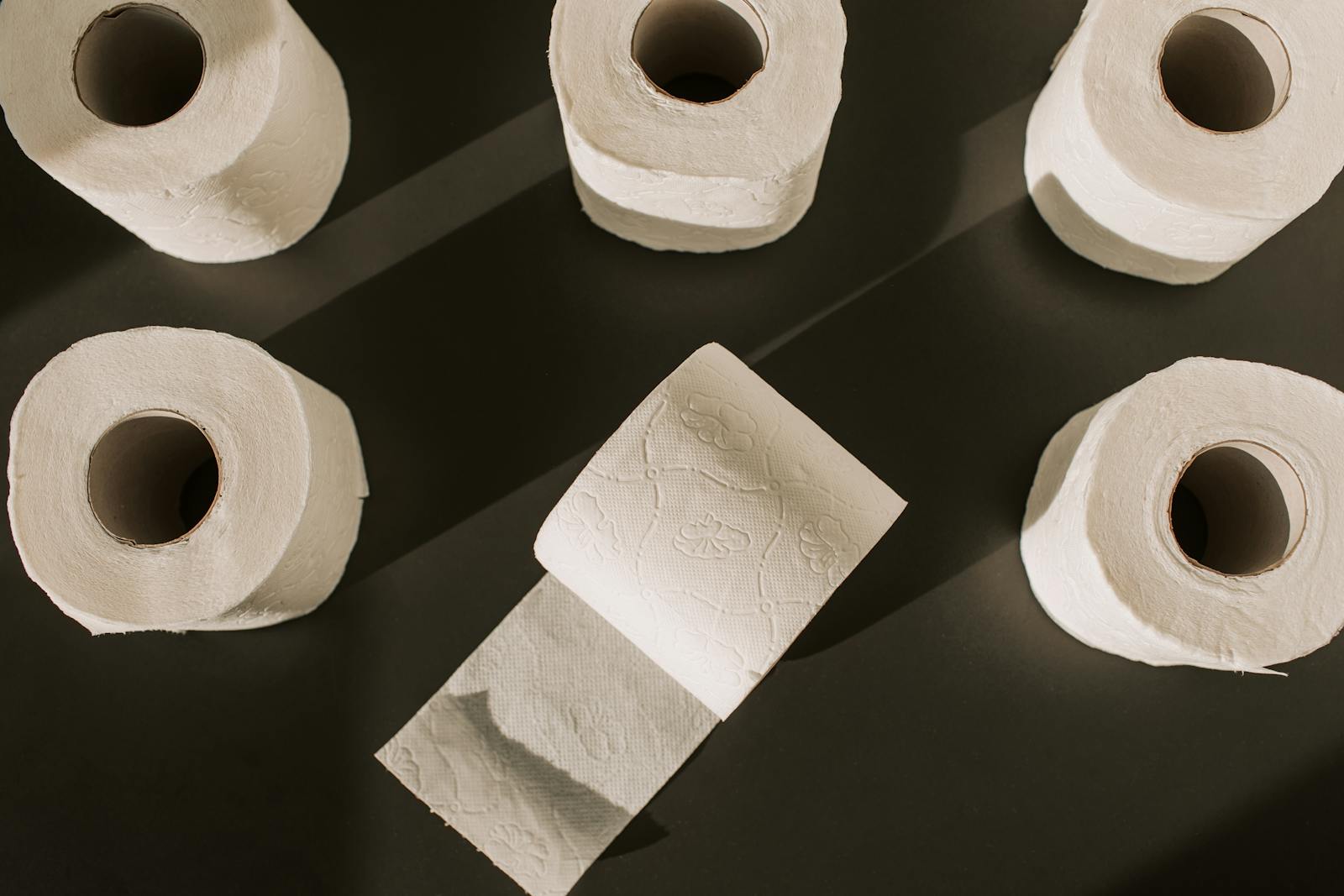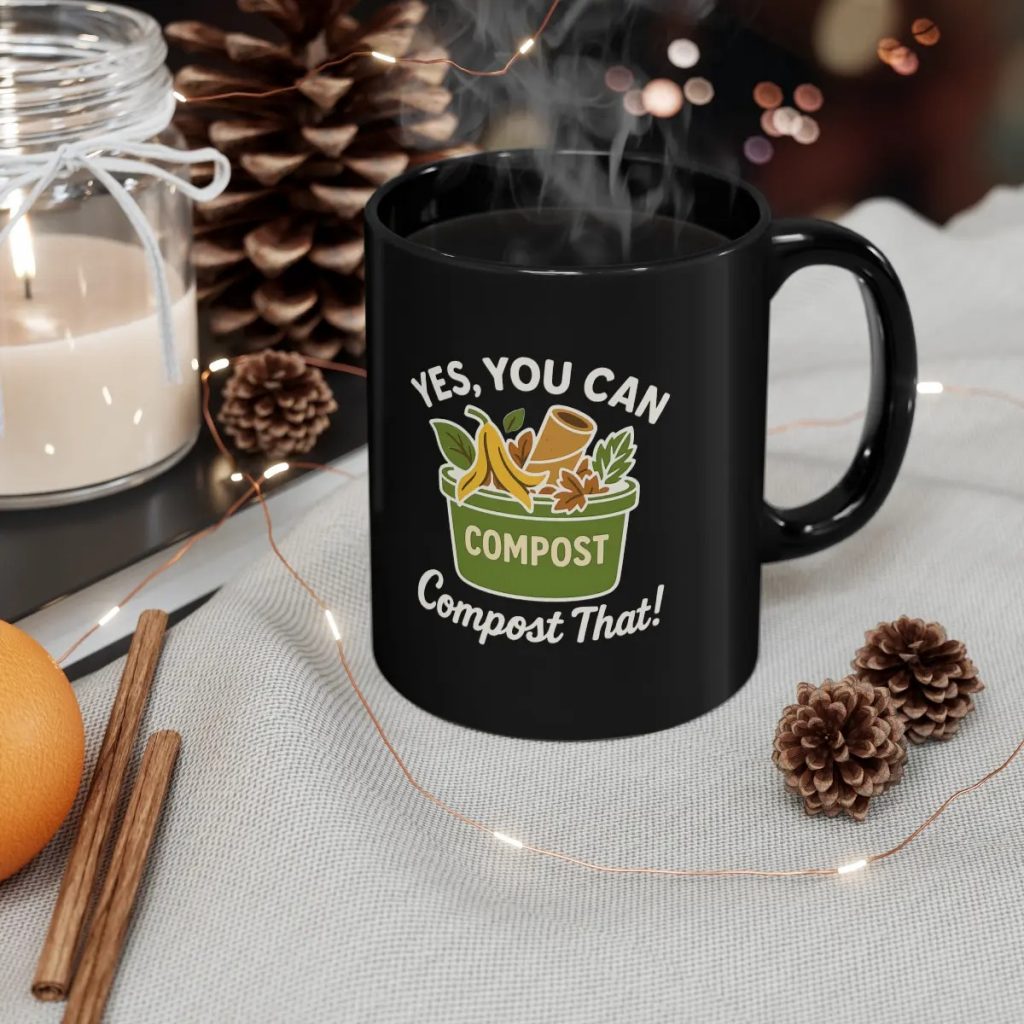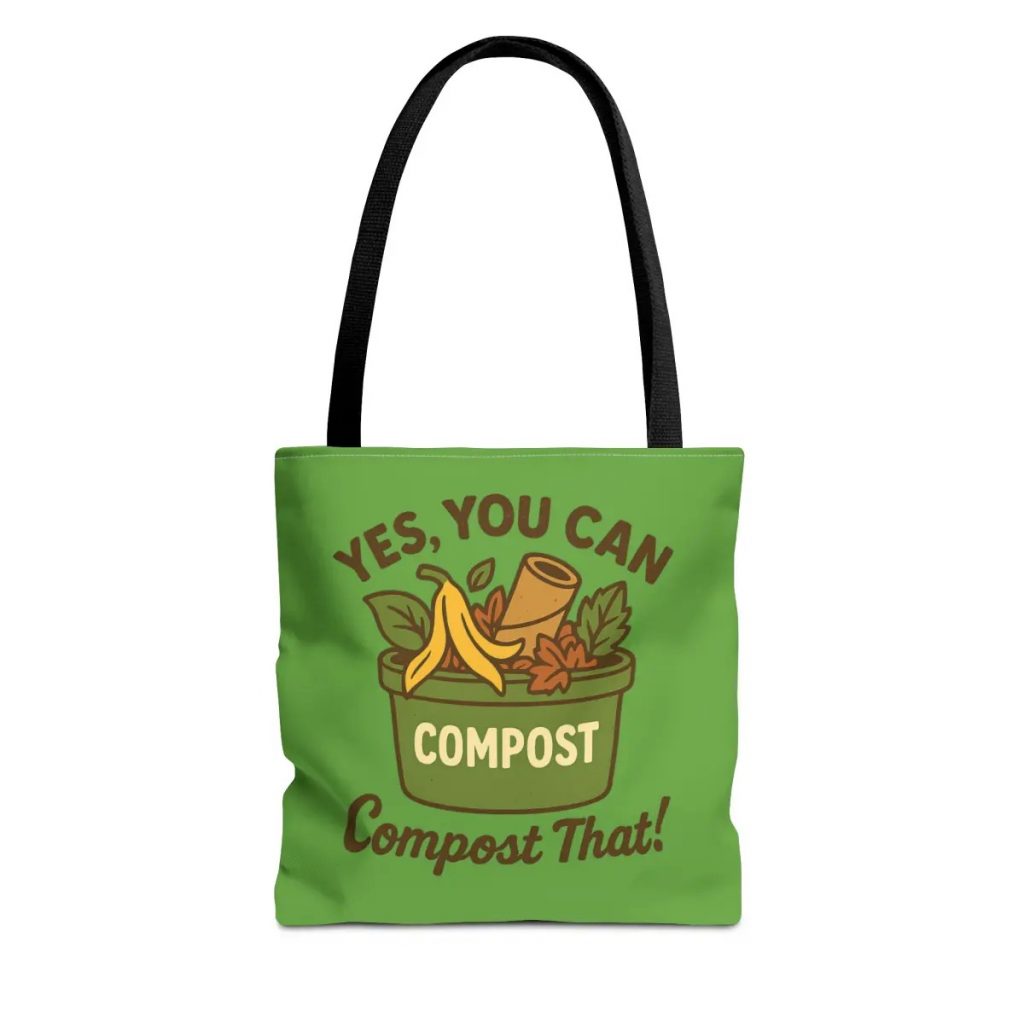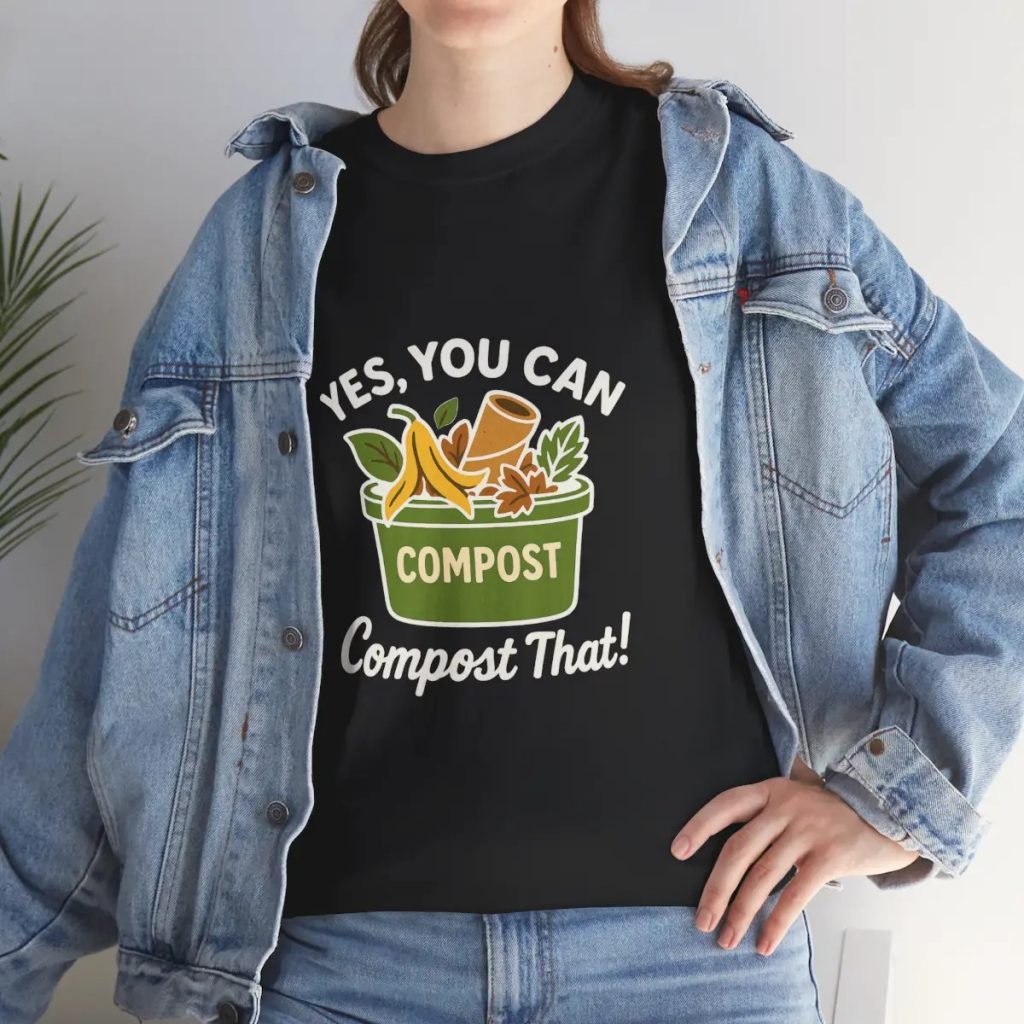Yes, and How to Do It
Got toilet rolls stacking up?
Instead of flushing them down the drain—which can lead to proper disposal issues like buildup in sensitive plumbing or septic systems—good news, you can compost them.
This superior alternative keeps them out of the sewage waste stream, preventing septic sludge problems and turning them into a valuable resource.
Yes, toilet paper rolls break down as a carbon-rich brown, so they balance wet kitchen scraps from your household waste.
Shred or tear them for quicker results, then mix them with food peels and garden trimmings.
Composting is simple recycling for your home.
You feed your bin—a natural biological digester—with scraps, and it cooks them into dark, crumbly soil that helps plants grow.
Think of your compost as a magic kitchen for waste, where everyday bits turn into garden gold.
Less trash goes to the landfill, and that cuts methane, a strong greenhouse gas.
This matters if you want a cleaner bin, healthier soil, and a lighter footprint—plus, it helps prevent buildup in your home’s plumbing.
Beginners love that toilet rolls absorb moisture and add air pockets, which keeps a pile from getting soggy.
If you are just getting started, try these friendly basics in the guide on Starting Composting at Home.
Toilet rolls also suit worm bins and compost tumblers. Worms enjoy soft cardboard as bedding, and tumblers like the dry balance.
Keep inks minimal, avoid plastic tape, and you are set for fast, tidy compost.
Key takeaways:
- Toilet rolls are compostable browns that add carbon and airflow.
- Shred rolls, then mix with food scraps for faster compost.
- Composting cuts landfill waste and methane while feeding your soil.
- Great for worm bins and compost tumblers when kept clean and simple.
Why Toilet Rolls Make Perfect Compost Additions

Toilet rolls are more than recycling fodder. They are a simple, carbon-rich brown that keeps your compost balanced, airy, and tidy.
When you add them in the right mix, the pile heats nicely and breaks down faster.
Want a deeper primer on paper products in compost?
See this quick guide on composting cardboard effectively.
Why Toilet Rolls Make Perfect Compost Additions (And How To Use Them)
If you live in a home with a bathroom, you already have a steady supply of free compost material.
Those empty toilet rolls you usually toss in the trash are actually perfect brown material for your compost bin.
Compost is just nature’s way of turning old scraps into fresh, crumbly soil. It needs a mix of wet, nitrogen rich “greens” like food scraps and dry, carbon rich “browns” like cardboard and dry leaves.
Toilet rolls fit right into that brown group and help keep everything in balance.
In this guide, you’ll learn why toilet rolls are so useful in compost, how to prepare and use them safely, and a few easy mistakes to avoid.
By the end, you might look at that cardboard tube with fresh respect.
Why Toilet Rolls Are Great Brown Material For Compost
Toilet rolls are simple, plain cardboard tubes, but they do a lot of work in a compost pile.
They add carbon, improve airflow, and help soak up extra moisture. That is a big job for something most people never think about.
If you already compost kitchen scraps or yard waste, toilet rolls can quietly fix some common problems, like bad smells or soggy, heavy piles.
Toilet rolls add carbon that balances your kitchen scraps
Toilet rolls are made from cardboard, so they are high in carbon.
In compost talk, that makes them “browns.” Your food scraps, coffee grounds, and fresh grass are “greens,” which are high in nitrogen.
Compost likes a mix that leans toward browns.
When you add lots of fruit and veggie scraps without enough browns, the pile can turn slimy and smelly. Toilet rolls help calm things down.
A simple way to think about it is this: greens feed the compost microbes, and browns like toilet rolls help them work at a steady pace.
With a better balance, your compost warms up, breaks down faster, and smells more like forest soil, not a trash bin.
If you want more carbon rich ideas, you might enjoy this guide to turning toilet paper rolls into garden “gold”.
Shredded toilet rolls improve airflow and stop bad smells
Whole toilet rolls are stiff and hold their shape. When you rip or cut them into smaller pieces, they make tiny air pockets in the compost.
These gaps let oxygen move through the pile.
The microbes that break down your scraps need oxygen to stay healthy. With good airflow, they stay active, and your compost breaks down cleanly.
Without it, the pile can go anaerobic, which means it starts to rot without enough air. That is when you get that strong, “something went wrong” smell.
Shredded toilet rolls act like little props inside the compost, keeping it from getting packed down.
This makes it easier to avoid smelly, dense clumps, especially if you are composting lots of soft kitchen scraps.
Cardboard tubes help soak up extra moisture in your compost
Toilet rolls also act like tiny sponges. They soak up extra water in a wet bin and then release it slowly as the pile dries.
Think about a week when you toss in lots of melon rinds, cucumber ends, and other juicy scraps.
The bin can quickly turn soggy. A healthy compost pile should feel like a wrung out sponge, damp but not dripping.
When you toss in some torn toilet roll pieces with those wet scraps, they help absorb the extra liquid.
This keeps the pile from becoming a stinky, heavy mess and helps everything break down more evenly.
How To Prepare And Use Toilet Rolls In Your Compost Pile
You do not need special tools to compost toilet rolls, just a bit of care and a few simple habits.
This is where things get practical and easy to follow.
If you enjoy learning about other household items that can be composted, you might also like this guide on household scraps like toilet rolls for composting.
Choose safe toilet rolls without plastic or heavy printing
Not every cardboard tube is a good fit for your compost. Before you add toilet rolls, use this quick checklist:
- Good choices: Plain brown or light cardboard tubes, with no plastic or waxy feel
- Avoid: Rolls with plastic wrap stuck on, foil, shiny or glossy coating, or sticky tape
- Be cautious: Very bright or metallic printing, as these can contain inks or materials you do not want in your soil
If you are unsure, tear the roll and feel it. Natural cardboard feels dry and fibrous, not slick.
Keeping plastic and heavy inks out of your compost protects your soil, your plants, and the tiny life in the pile.
Eco brands often sell compostable toilet paper and cores, which can be a nice match if you are trying to reduce waste in the bathroom.
Tear or cut toilet rolls so they break down faster
Whole tubes can sit in your compost for months. They do break down, but very slowly. A little prep makes a big difference.
Try this simple method:
- Flatten the tube with your hand.
- Tear it into long strips.
- Rip those strips into smaller pieces, about the size of a postage stamp.
Smaller pieces have more surface area, so microbes can reach more cardboard at once.
That means faster breakdown and smoother finished compost.
If you prefer tools, you can use scissors or a paper and cardboard shredder.
If the cardboard is very dry, lightly mist it with water so it is flexible, but do not soak it. Soggy cardboard can clump and lose that helpful structure.
Mix toilet rolls with greens for a healthy compost balance
Toilet rolls count as browns, so they help balance your wetter greens.
A simple rule of thumb works well for most home composters.
For every bowl of kitchen scraps you add, toss in a small handful of torn toilet roll pieces.
You do not need to measure or stress. Just make sure browns are more common than greens overall.
You can:
- Sprinkle the cardboard pieces on top of the greens.
- Stir them in a bit with a garden fork or small shovel.
- Layer them in the bin, greens then browns, like a compost sandwich.
Try to keep the pieces mixed into the pile rather than sitting in a dry clump on the surface.
Turning or stirring your bin now and then keeps everything airy and helps the toilet rolls do their job.
Common mistakes when composting toilet rolls (and easy fixes)
Toilet rolls are pretty forgiving, but a few small mistakes are common.
Here are some quick problems and fixes:
- Problem: Adding lots of rolls at once, so the pile dries out and breaks down slowly.
Fix: Add more kitchen scraps or fresh greens, and water lightly if the pile feels dry. - Problem: Tossing in whole tubes that sit there for months.
Fix: Tear or cut them into smaller pieces before adding them. - Problem: Soaking cardboard, then packing it tightly so air cannot pass through.
Fix: Keep the pieces only slightly damp and fluff the pile with a fork to open up air spaces.
If your compost looks a bit slow or lopsided sometimes, that is normal. Small adjustments with toilet rolls and other browns usually bring things back to balance.
Eco Benefits Of Composting Toilet Rolls At Home
Toilet rolls do more than help your compost. They also support low waste habits and healthier soil. For such a small item, they can be part of a bigger change.
If you enjoy creative garden ideas, you might also like these ways to use toilet paper rolls in the garden.
Composting toilet rolls cuts waste going to landfills
Every toilet roll that goes into your compost is one less piece of cardboard in the trash.
It may not sound like much, but think about how many rolls your home uses in a year. Then multiply that by all the homes on your street.
In a landfill, organic material often breaks down without enough air and can create methane, a strong greenhouse gas.
When you compost at home, you give those toilet rolls a clean, useful second life instead of letting them sit in a trash pile.
Small actions like this add up, especially when they become habits.
Turn toilet rolls into rich organic matter for healthy soil
After a few months in a healthy compost pile, you will not see toilet rolls anymore. They transform into dark, crumbly compost that smells like fresh soil.
This finished compost:
- Helps soil hold water without turning to mud
- Improves structure, so roots can spread and breathe
- Adds a gentle mix of nutrients, perfect for most plants
You can use compost made with toilet rolls in garden beds, pots, raised beds, or around trees and shrubs. It is a simple way to return what you used back to the ground.
Support low-waste habits with simple changes in your bathroom
One easy change is to place a small basket or paper bag in the bathroom just for toilet rolls and other safe paper items, like plain tissue boxes or cardboard sleeves.
When someone finishes a roll, they drop it in the basket instead of the trash. When the basket fills, you bring it out to the compost station.
That is it.
Many people now like eco-friendly or tree-free toilet paper. These options often come on simple cardboard cores that compost very well, which keeps your routine low waste from start to finish.
Over time, you start to see toilet rolls not as trash, but as a free resource that feeds your compost and supports the planet.
Toilet rolls may look boring, but they are quiet heroes in a compost bin.
They bring carbon, help air move through the pile, and soak up extra moisture so your compost stays healthy and active.
The basic steps are simple: check the roll for plastic or heavy printing, tear it into small pieces, mix it with your kitchen scraps, and watch for the common issues like too many browns or soggy clumps.
A few small habits can turn a daily bathroom leftover into rich, useful compost for your garden.
Next time a roll runs out, do not toss it. Start saving your toilet rolls today, and add them to your next compost pile.
Your soil, your plants, and your trash bin will all feel lighter.
Boosting Your Compost’s Health with Carbon-Rich Toilet Rolls
Think of toilet rolls as the flour in a compost recipe. Flour sets the structure so the rest of the ingredients work. Toilet rolls do the same for your pile.
They add carbon, create air pockets, and soak up extra moisture from wet food scraps.
This balance helps your microbes thrive, which speeds up decay and keeps smells down.
Unlike flushing toilet rolls down the drain, where they contribute to sludge buildup in septic tanks and hinder efficient bacterial breakdown through anaerobic bacteria, composting promotes healthy aerobic activity for faster, odor-free results.
Use dry, clean rolls only.
No food grease, plastic wrap, or heavy glossy inks. Dry and clean cardboard does not invite pests.
For best results, tear or shred the rolls, then mix them through your greens like veg peels or coffee grounds.
Aim for a loose blend rather than a stack. A simple rule that works: for every handful of greens, add a similar handful of shredded toilet rolls.
In contrast to the septic environment, where flushed materials settle into a stubborn sludge layer, this composting approach ensures smooth decomposition without those plumbing woes.
Available on our Compost Charm Clothing Store
Environmental Wins from Composting Toilet Rolls
Composting toilet rolls keeps small paper items out of the bin and out of landfill. That saves space and cuts methane, a potent gas from buried waste.
At home, this small swap turns into real impact over time—especially when avoiding the septic sludge that builds up from improper disposal.
Your compost enriches soil naturally, which can reduce the need for store-bought fertilizers and plastic packaging.
Curious about the bigger picture on waste cuts at home? Join the positive momentum in our Don’t Toss It Campaign.
Cardboard adds stable carbon to your compost. That means better structure and better water holding in the final compost.
Healthy soil supports stronger roots and happier plants.
For another look at the benefits of adding cardboard to compost, you can check this simple overview on the environmental benefits of composting cardboard.
Key takeaways:
- Toilet rolls are steady browns that balance wet scraps and add airflow.
- Shred and mix rolls with greens for faster, cleaner compost.
- Clean, dry rolls do not attract pests and help manage moisture.
- Composting toilet rolls reduces landfill waste and builds richer soil.
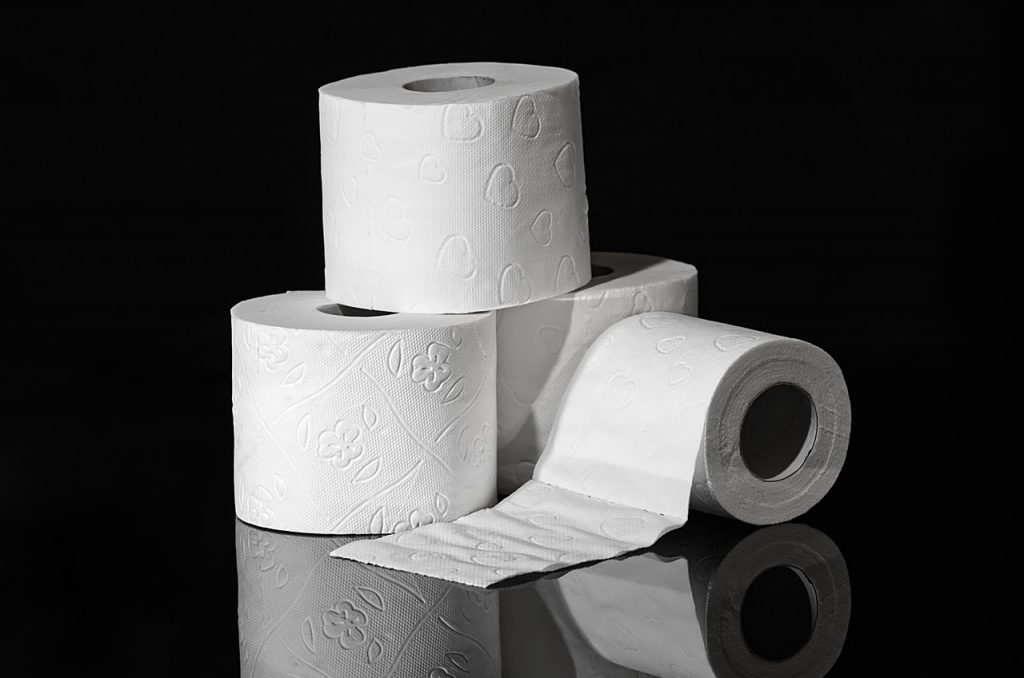
How to Add Toilet Rolls to Your Compost the Right Way
Toilet rolls are simple, safe browns that help balance wet kitchen scraps. They soak up moisture, add air spaces, and break down well when torn small.
By composting them, you keep potential contaminants out of your septic system and wastewater flow, preventing issues like excess solids settling that can lead to septic sludge buildup.
Keep it clean and plain, and you will get faster, sweeter compost with fewer smells—while protecting the delicate balance of septic tank layers.
Here is how to prep them and mix them in any setup.
Step-by-Step Prep for Composting Toilet Rolls
A little prep turns toilet rolls into compost fuel. Start with a quick check and a cut.
- Shake out crumbs or dust. No need to wash.
- Remove tape or plastic. Keep only plain cardboard—clean cardboard is not an inorganic material like some non-compostable items that contribute to septic failure when flushed.
- Cut into strips, shred, or flatten and tear. Smaller pieces rot faster.
- Add in modest amounts, about 1 to 2 handfuls per batch.
- Mix with wet scraps so pieces do not clump.
Avoid heavy glossy prints, metallic accents, or dark dyes. Light, minimal ink is fine.
If the roll feels waxy, keep it out—flushing such items compromises the clear liquid effluent necessary before discharge to the drain field.
For a deeper look at paper choices, see this clear guide on compostable toilet paper basics.
Best Practices for Mixing Toilet Rolls in Different Compost Setups
Different systems like different textures.
Match your toilet rolls to the bin you use—maintaining good compost structure aids in water conservation and avoids reliance on harsh biological additives for your overall waste management.
- Standard bins: Layer like lasagna. Add a thin layer of shredded toilet rolls after every layer of greens such as veg peels or coffee grounds. Aim for a loose 1-to-1 handful balance. If the pile feels wet, add more rolls for dryness and airflow.
- Tumblers: Small pieces are king. Shred rolls to finger-width strips or smaller. Tumble 3 to 4 times a week to boost aeration. If the mix is soggy, add extra rolls to soak up moisture. If it looks too dry, add a splash of water and more greens.
- Vermicomposting: Worms love plain toilet rolls as soft bedding. Moisten lightly, then mix in small amounts with food. Keep pieces small and do not overfeed dry cardboard. Aim for bedding that feels like a wrung-out sponge, not dusty or sopping.
Curious about speed gains from smaller pieces? This short note on cutting tubes for faster composting explains why size matters.
Available on our Compost Charm Clothing Store
Tips and Troubleshooting for Successful Toilet Roll Composting
Toilet rolls are simple browns that keep compost fluffy and fresh. A few small tweaks make them break down faster and avoid mess.
Use clean, dry cardboard, aim for balance with food scraps, and mix well.
Here is how to keep things smooth, with quick fixes if your pile gets fussy—especially when contrasting these minor compost hiccups with the bigger headaches of septic system problems.
Avoiding Common Pitfalls with Toilet Rolls in Compost
Soggy rolls, plastic tape, and big chunky pieces can stall a pile. Keep it simple.
Keep it dry, strip off tape or labels, then tear into small bits. Wet rolls can mat, so let them dry first or mix them with extra dry browns.
Add rolls in small batches, then blend through greens.
The goal is a pile that feels like a wrung-out sponge.
Balance matters. Too many toilet rolls, and the mix dries out. Too many food scraps, and it turns heavy and clumpy—much like how introducing fats oils and grease to septic tanks can build up a floating scum layer that clogs the works.
If things feel sticky or slow, this guide on troubleshooting clumpy compost piles shows how to fix moisture and airflow fast. Quick rule to remember: Shred, then mix, never stack.
And while a compost pile might give off a mild earthy smell now and then, ignoring balance in a septic system can lead to severe foul odors from failure.
By composting properly, you also sidestep excessive build-up of septic sludge, keeping things flowing without the need for harsh interventions.
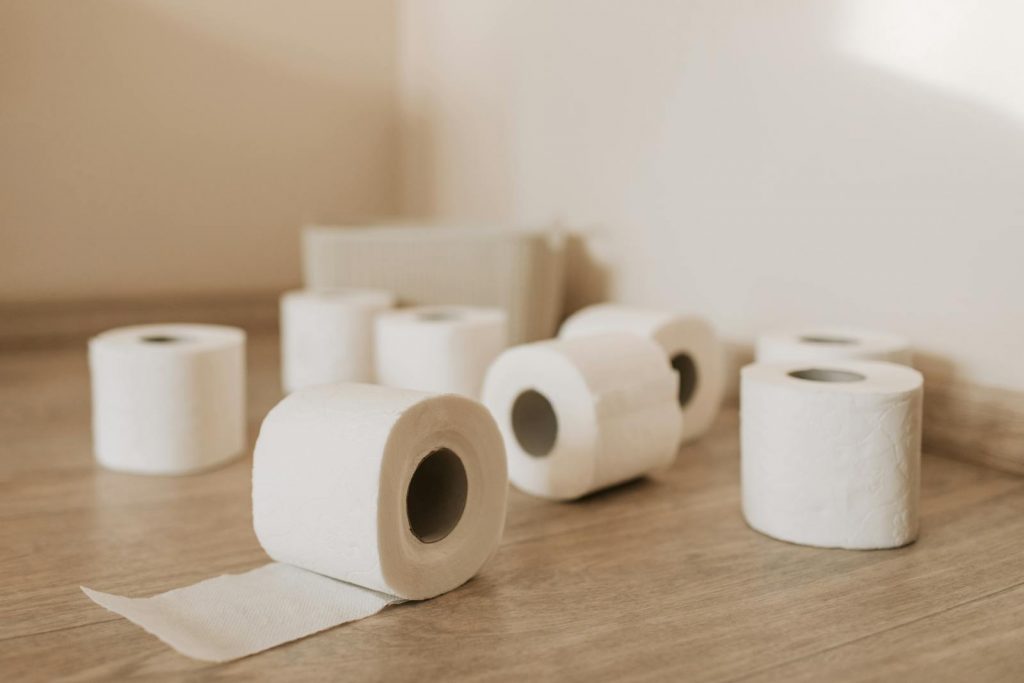
Fun Ways to Reuse Toilet Rolls Before Composting
Give toilet rolls one more job before they retire to the compost.
Try quick seed starters, cable tidies, or homemade bird feeders with peanut butter and seeds.
Use them as little collars around seedlings to deter slugs. For more garden ideas, these ways to use toilet paper rolls in the garden are handy and easy.
When the project is done, compost the rolls. You get fun, then zero-waste—plus, responsible disposal like this avoids costly future maintenance such as tank pumping for your septic system.
Shred them and tuck into your bin or tumbler to soak up moisture and add air pockets.
That small step helps your worms and microbes do their best work, and it keeps toilet rolls out of the bin for good, steering clear of chemical additions that septic systems often require to stay balanced.
Available on our Compost Charm Clothing Store
Conclusion
Yes, you can compost toilet rolls. They are clean, carbon-rich browns that help balance wet kitchen scraps, add airflow, and soak up extra moisture.
Tear or shred them for faster breakdown, then mix through your pile so they do not clump.
Unlike flushing them, which can lead to clogs and require regular maintenance like septic tank pumping to prevent system failure, composting keeps things simple, tidy, and great for eco-friendly gardens.
Responsible disposal this way also helps maximize your septic tank capacity without added hassle.
Key takeaways:
- Toilet rolls balance your pile as reliable browns.
- Cut or shred for quicker results and fewer mats.
- Mix with greens to boost airflow and reduce smells.
- Keep inks light, remove tape, and avoid waxy coatings—flushing them risks slow drains and the need for professional septic tank cleaning.
Ready to try it?
Add a handful of shredded toilet rolls to your next batch, then watch your compost thrive.
For a step-by-step refresher, see these easy ways to turn scraps into soil at Composting Made Easy
FAQ
-
How long do toilet rolls take to decompose?
- About 3 months in an active, well-aerated pile. Cooler piles take longer. In contrast, flushing them can cause slow drains and buildup that demands more intensive handling.
-
Can I compost colored or printed rolls?
- Prefer plain cardboard with light ink. Skip heavy dyes, metallics, or glossy coatings.
-
Are toilet rolls safe for worm bins?
- Yes. Use as soft bedding, moisten lightly, and add in small amounts with food.
-
Do I need to remove the glue strip?
- The small seam of glue is usually fine. Peel off any plastic tape or labels.
-
Can I compost paper towels and tissues, too?
- Yes, if they are free of grease, chemicals, and heavy cleaners. Small food stains are fine.
-
What if I have a septic system—do I need extra steps?
- For those considering flushing, regular maintenance is key, including septic tank pumping to prevent system failure.
- Professional monitoring might involve technicians measuring sludge levels during septic tank cleaning, ensuring everything runs smoothly.
Thanks for reading. Got a quick question before you start?
Add a handful of shredded toilet rolls today, then share how your pile perks up.

